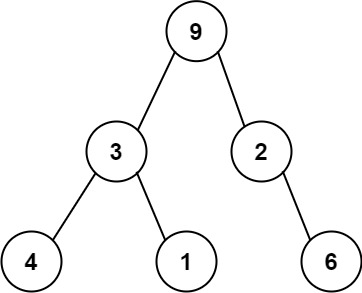2021-08-27 Daily-Challenge
Today I have done Implement Stack using Queues and leetcode's August LeetCoding Challenge with cpp.
Implement Stack using Queues
Description
Implement a last-in-first-out (LIFO) stack using only two queues. The implemented stack should support all the functions of a normal stack (push, top, pop, and empty).
Implement the MyStack class:
void push(int x)Pushes element x to the top of the stack.int pop()Removes the element on the top of the stack and returns it.int top()Returns the element on the top of the stack.boolean empty()Returnstrueif the stack is empty,falseotherwise.
Notes:
- You must use only standard operations of a queue, which means that only
push to back,peek/pop from front,sizeandis emptyoperations are valid. - Depending on your language, the queue may not be supported natively. You may simulate a queue using a list or deque (double-ended queue) as long as you use only a queue's standard operations.
Example 1:
Input
["MyStack", "push", "push", "top", "pop", "empty"]
[[], [1], [2], [], [], []]
Output
[null, null, null, 2, 2, false]
Explanation
MyStack myStack = new MyStack();
myStack.push(1);
myStack.push(2);
myStack.top(); // return 2
myStack.pop(); // return 2
myStack.empty(); // return False
Constraints:
1 <= x <= 9- At most
100calls will be made topush,pop,top, andempty. - All the calls to
popandtopare valid.
Follow-up: Can you implement the stack using only one queue?
Solution
class MyStack {
queue<int> container;
public:
/** Initialize your data structure here. */
MyStack() { }
/** Push element x onto stack. */
void push(int x) {
int sz = container.size();
container.push(x);
while(sz--) {
container.push(container.front());
container.pop();
}
}
/** Removes the element on top of the stack and returns that element. */
int pop() {
int val = container.front();
container.pop();
return val;
}
/** Get the top element. */
int top() {
return container.front();
}
/** Returns whether the stack is empty. */
bool empty() {
return container.empty();
}
};
// Accepted
// 16/16 cases passed (0 ms)
// Your runtime beats 100 % of cpp submissions
// Your memory usage beats 98.89 % of cpp submissions (6.7 MB)
August LeetCoding Challenge 27
Description
Verify Preorder Serialization of a Binary Tree
One way to serialize a binary tree is to use preorder traversal. When we encounter a non-null node, we record the node's value. If it is a null node, we record using a sentinel value such as '#'.

For example, the above binary tree can be serialized to the string "9,3,4,#,#,1,#,#,2,#,6,#,#", where '#' represents a null node.
Given a string of comma-separated values preorder, return true if it is a correct preorder traversal serialization of a binary tree.
It is guaranteed that each comma-separated value in the string must be either an integer or a character '#' representing null pointer.
You may assume that the input format is always valid.
- For example, it could never contain two consecutive commas, such as
"1,,3".
Note: You are not allowed to reconstruct the tree.
Example 1:
Input: preorder = "9,3,4,#,#,1,#,#,2,#,6,#,#"
Output: true
Example 2:
Input: preorder = "1,#"
Output: false
Example 3:
Input: preorder = "9,#,#,1"
Output: false
Constraints:
1 <= preorder.length <= 10^4preoderconsist of integers in the range[0, 100]and'#'separated by commas','.
Solution
auto speedup = [](){
cin.tie(nullptr);
cout.tie(nullptr);
ios::sync_with_stdio(false);
return 0;
}();
class Solution {
public:
bool isValidSerialization(string preorder) {
int count = 1;
int len = preorder.length();
for (int i = 0; i < len; ++i) {
if(preorder[i] == '#') {
count -= 1;
i += 1;
if(count == 0 && i != len) return false;
} else {
while(i < len && preorder[i] != ',') {
i += 1;
}
count += 1;
}
}
return !count;
}
};
// Accepted
// 151/151 cases passed (0 ms)
// Your runtime beats 100 % of cpp submissions
// Your memory usage beats 66.91 % of cpp submissions (6.8 MB)